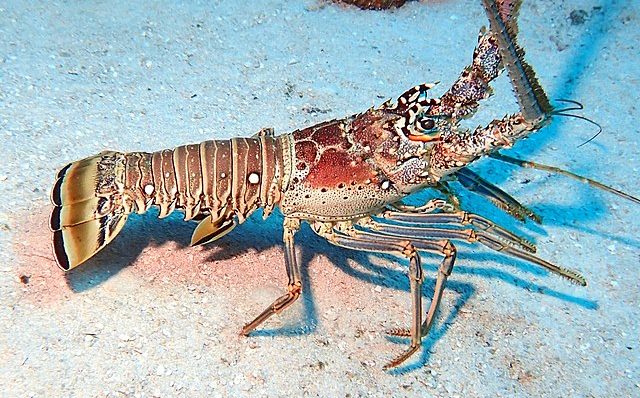The spiny lobster season in Jamaica won’t start till July 1, 2025, but authorities are already fending off any closed season harvest.
According to The Kitts Nevis Observer, the National Environmental Planning Agency (NEPA) and the National Fisheries Authority (NFA) have begun closed season crackdown.
The agencies are advising merchants who still have frozen supplies from the foregoing season which ended on March 31, 2025 to declare them.
Possessing fresh lobster in Jamaica is usually only legal a maximum 21 days after the end of the fishing season.
The same goes for the valuable Queen conch, whose fisheries close from July 1 through October 31, during which time even processing is illegal.
July marks the most productive time for the Caribbean spiny lobster from Belize to Jamaica, both of which open their seasons concurrently.
Along with the above off-season rules on the popular crustacean and premium snail, the authorities also enforce open season rules. These include minimum size and the daily limits per day per fisherman.
Artificial Oversupply
The crackdown attends a proposal for year-round lobster sales by the Minister of Agriculture, Floyd Green, to fight unnatural oversupply.
Ironically, oversupply of lobster in the Caribbean country owes to the limited sales period during the commercial fisheries season.
According to the Minister, making it illegal to sell lobster in the off-season forces fishers to preserve them and saturate open season market timings.
On June 5, 2025, Green therefore advised declarations of lobster stock during the April 1-June 30 fishing closure to facilitate legal sales.
A pilot trial on allowing year-round marketing has already launched and could streamline market prices.
The success of this pilot program depends on how many lobstermen and sellers declare their stock each closed season. And as the following statistics show, the spiny lobster harvest in Jamaica is quite lucrative, thus necessitating year-round policing.
Jamaica Spiny Lobster Harvest Statistics
The spiny lobster (Panulirus argus) is Jamaica’s most valuable crustacean and the second most lucrative seafood after Queen conch. In 2019, the spiny lobster fishery produced about 229 tonnes, per a CeDePesca report. This is a fall from the peak 308.92 tonnes of 2001, according to a Food and Agriculture Organization (FAO)’s report. For this reason, the seafood sector in the Caribbean nation was in the early 2020s under “overfished” status.
Irrespective of falling production, the lobster industry has remained robust, beginning 2014 through 2019, representing 88% of frozen seafood exports.
How lucrative is Jamaica’s spiny lobster sector?
In the late 2010s, Jamaica’s lobster sector remained strong due to lucrative prices. According to Canari organization, local frozen lobster export rates appreciated from $18.32 a kg in 2015 to $27.63/kg in 2019. Fresh lobster prices, unlike their frozen equivalents, faced price volatility vagaries in the same timeline. Offers plunged from $30.95 a kg in 2015 to $18.98 a year later and then revamped to $29.17 in 2017.
Who fishes spiny lobster in Jamaica?
Artisanal fishermen either using traps, nets from motorboats or doing scuba-diving account for the bulk of lobster landings in Jamaica. By 2019, they had raised the total export lobster value to over US$5 million. 75% of artisanal catches end up in the local high-end beach hotels, restaurants and street joints while the rest go into export. The biggest export destinations are France, the U.S. and Hong Kong, besides regional islands.
How do artisanal fishermen land spiny lobster?
According to the FAO, traps account for 38% or 103.43 tonnes of all spiny lobster landings in Jamaica, as of 2001. Scuba-diving brings a further 17% or 45.14 tonnes while free diving garners 32% or 87.88 tonnes (2001). The rest of the catches are via gill nets, hookahs and wooden traps.
